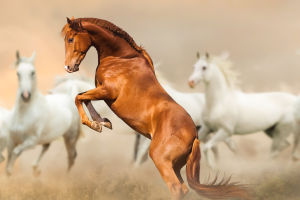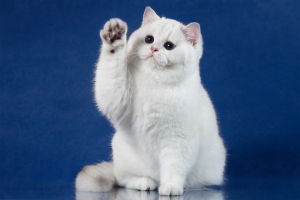Cats are one of the most common pets in modern society, yet their behaviors and personalities are often far more complex than what meets the eye.
Cats are extremely independent animals, and this independence has greatly influenced their relationship with humans.
Throughout human civilization, the interaction between cats and humans has evolved from being revered as sacred creatures to becoming everyday companions.
Unlike dogs, cats were not subjected to specialized domestication; instead, they adapted to human living environments, and this adaptation has allowed them to maintain a certain degree of distance and mystery in their relationship with humans.
Despite their strong independence, cats have significant emotional needs, particularly when a deep trust has been established with their owners. Once this bond is formed, cats can become highly dependent. Unlike dogs, cats express their emotions in more subtle and indirect ways.
They communicate through their purring, tail movements, ear positions, and physical touch. Cats often purr softly to express comfort and contentment, especially when they feel safe. This purring sound is almost like their approval and reassurance of the world around them.
One of the most distinctive behaviors of cats is their cleanliness. Cats groom themselves by licking their fur, which is not only a hygienic habit but also a way for them to soothe themselves.
When cats feel anxious or stressed, they often start licking, which is not just for cleaning but also a method of releasing tension. Studies show that when cats groom themselves, they release endorphins, which help to alleviate anxiety and enhance their mood.
Moreover, cats are born hunters, and although they have long been removed from their wild environments, this instinct still manifests in their behavior. Domestic cats often enjoy chasing fast-moving objects, which may seem like play, but it is a continuation of their hunting instincts.
Unlike dogs, cats tend to approach prey by lying in wait, using delicate movements and sudden bursts of energy to catch their quarry. This makes them highly efficient hunters.
Although cats are more active during the night, their activity patterns do not always align with human schedules. Cats typically have periods of heightened activity at dawn and dusk, when their eyes can adapt to low light, making them particularly active during these times.
This behavior has earned them the reputation of being "crepuscular hunters." This natural tendency makes cats highly adaptable to urban life, where they can quietly roam the streets at night, adjusting to constantly changing environments.
Cats also have remarkable vision, especially in low light. Their retinas contain more rod cells, allowing them to see clearly in dim conditions. Additionally, their hearing is highly sensitive, enabling them to detect high-frequency sounds that humans cannot hear, which is crucial for their hunting abilities.
Although cats prefer solitude, they can establish subtle social connections with other animals and even other cats. Unlike dogs, the social structure among cats is not based on a clear hierarchy. Instead, they tend to form relationships through "territorial sharing" or "mutual recognition."
The interactions between cats are based on mutual respect rather than strict social order, making their social structure more flexible and less rigid than that of dogs.
Cats are also notoriously picky eaters, as they are obligate carnivores that require large amounts of protein from animal-based sources.
Despite the variety of cat food available on the market, cats are often very selective, sometimes hesitant even to try fresh food. This finicky nature means that cats are highly particular about their diet, preferring foods that are rich in high-quality proteins.
In modern households, cats are often assigned various roles: as pets, family members, and even "spiritual guardians" in some homes. They exist quietly, providing companionship without intruding on their owners' lives.
Their presence seems to act as a soothing balm in our daily lives; their subtle demeanor and peaceful company often help people relieve stress and ease their emotions. This quality is one reason why cats have become symbols in many literary works, representing independence, mystery, and depth.
As a part of our lives, cats exhibit a unique charm. Their personalities, behaviors, and relationships with humans are endlessly fascinating. Perhaps it is their sense of mystery and independence that makes them "soulmates" for so many people, quietly yet profoundly enhancing our lives.


